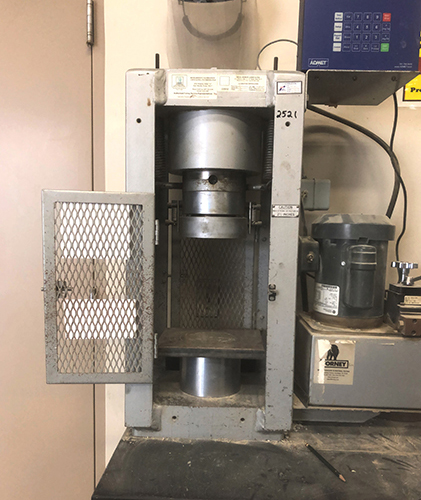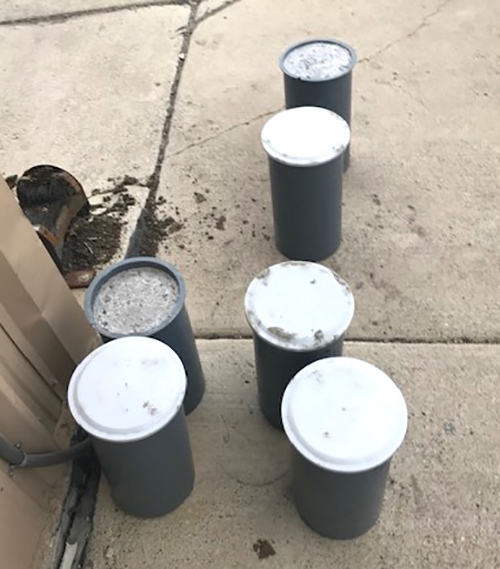Concrete is concrete, right? Pretty simple: cement, gravel and some water. So why does it take so long to fix a simple pothole on the highway?
When it comes to repairing a highway in Texas, it turns out there's a lot to know. While hot-mix asphalt can fill a shallow pothole, cooling quickly and allowing the work area to be opened in a minimum of time, for a deeper pothole and other types of problems, a "full-depth repair" is needed. This requires new concrete to be mixed and poured, and that concrete has to meet some tough standards. These standards are set by TxDOT's Construction Division. New materials and techniques are continually investigated and tested to find the best possible ways to keep Texas state roads as safe and strong as possible.

For a full-depth repair of a pothole (removing all the existing concrete and completely replacing it), a special high-early-strength concrete formula is used to speed the repair. All concrete has to cure to achieve the required strength for the job it has to do, and for a patch on the ground, TxDOT requires a minimum strength of 1800 psi (pounds per square inch) before the work area can be opened to traffic. For a pavement repair on a bridge, new concrete must reach 3000 psi before the work crew can open the area to traffic.
But how do they find out the strength of the new concrete? The longer it sets, the stronger it gets, but many variables affect the process, like the temperature and humidity during the curing. It's impossible to judge the strength just by the amount of time that has passed since the concrete was poured, so a series of tests have to be done to find the strength of the new concrete.

As soon as the concrete has been poured at the site, a number of test samples are poured into molds, creating concrete cylinders 8 inches high and 4 inches wide. Those cylinders are taken to a location where a pressure test unit is kept. After a minimum of four hours, a cylinder is placed in the test chamber and measured pressure is applied until the concrete cracks or chips (see a sample video). The pressure at that point is recorded and checked to see if it meets the minimum standards. If it doesn't, a new cylinder is tested again later, and the test is repeated at intervals until it does. When a sample meets the requirement, a second cylinder is tested immediately and the two test pressures are averaged together. If the average of the two meets or exceeds the requirement, the traffic control equipment is picked up and traffic is allowed onto the repaired pavement.
So the next time you wonder what's taking so long to open a lane after a pothole is patched, remember TxDOT is checking carefully to make sure you and your family have safe travel on our roads.
Jake Smith
I-35 Public Information Officer
254-867-2705
Contact My35